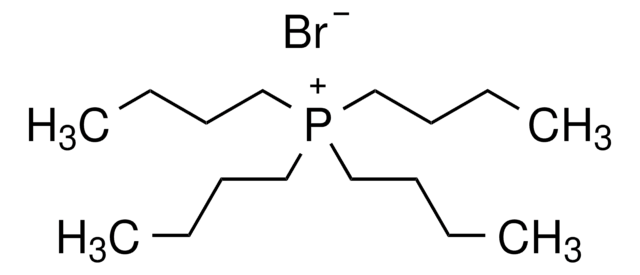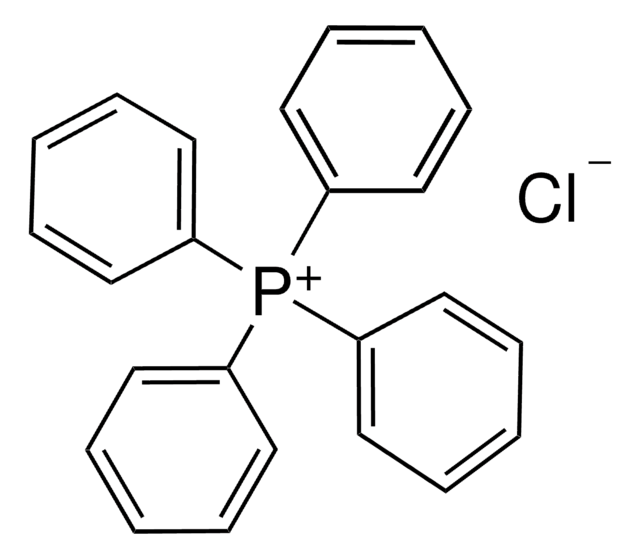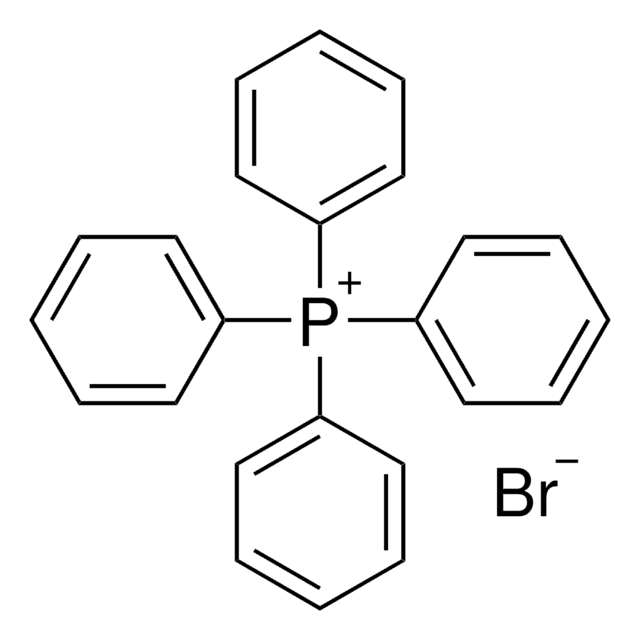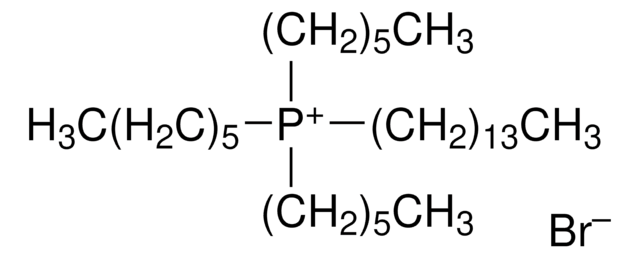144800
Tetrabutylphosphonium chloride
96%
Synonym(s):
Tetra-n-butylphosphonium chloride
About This Item
Recommended Products
Quality Level
Assay
96%
form
liquid
greener alternative product characteristics
Catalysis
Learn more about the Principles of Green Chemistry.
mp
62-66 °C (dec.) (lit.)
greener alternative category
SMILES string
[Cl-].CCCC[P+](CCCC)(CCCC)CCCC
InChI
1S/C16H36P.ClH/c1-5-9-13-17(14-10-6-2,15-11-7-3)16-12-8-4;/h5-16H2,1-4H3;1H/q+1;/p-1
InChI key
IBWGNZVCJVLSHB-UHFFFAOYSA-M
Looking for similar products? Visit Product Comparison Guide
Related Categories
General description
Application
- Insight into Cellulose Dissolution with the Tetrabutylphosphonium Chloride-Water Mixture using Molecular Dynamics Simulations.: This study investigates the molecular dynamics of cellulose dissolution in a Tetrabutylphosphonium chloride-water mixture, providing insights into its potential application in biomass processing and material science (Crawford and Ismail, 2020).
- Thermodynamic and Transport Properties of Tetrabutylphosphonium Hydroxide and Tetrabutylphosphonium Chloride-Water Mixtures via Molecular Dynamics Simulation.: The research focuses on the thermodynamic and transport properties of Tetrabutylphosphonium chloride in water mixtures, highlighting its relevance in developing advanced ionic liquids for various industrial applications (Crawford and Ismail, 2020).
- End-of-life Treatment of Poly(vinyl chloride) and Chlorinated Polyethylene by Dehydrochlorination in Ionic Liquids.: This article explores the use of Tetrabutylphosphonium chloride as an ionic liquid for the dehydrochlorination of PVC and CPE, demonstrating its utility in sustainable polymer recycling processes (Glas et al., 2014).
Signal Word
Danger
Hazard Statements
Precautionary Statements
Hazard Classifications
Acute Tox. 1 Inhalation - Acute Tox. 3 Dermal - Acute Tox. 4 Oral - Aquatic Chronic 2 - Eye Dam. 1 - Skin Corr. 1C - Skin Sens. 1B
Storage Class Code
6.1A - Combustible, acute toxic Cat. 1 and 2 / very toxic hazardous materials
WGK
WGK 3
Flash Point(F)
266.0 °F - closed cup
Flash Point(C)
> 130 °C - closed cup
Personal Protective Equipment
Certificates of Analysis (COA)
Search for Certificates of Analysis (COA) by entering the products Lot/Batch Number. Lot and Batch Numbers can be found on a product’s label following the words ‘Lot’ or ‘Batch’.
Already Own This Product?
Find documentation for the products that you have recently purchased in the Document Library.
Our team of scientists has experience in all areas of research including Life Science, Material Science, Chemical Synthesis, Chromatography, Analytical and many others.
Contact Technical Service











